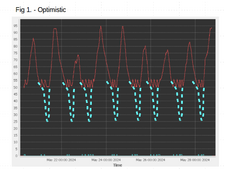kolek
Inventor of the Electron
- Joined
- Sep 29, 2021
- Messages
- 699
What's the lowest voltage you would want to store 280Ah LiFePO batteries long term without doing damage to the cells? If it matters cell is EVE LF280.
(leaving aside the damage caused by calendar aging). For reference I received my cells from Luyuan at 3.29V, that's my only data point, but I'd like to go lower.
(leaving aside the damage caused by calendar aging). For reference I received my cells from Luyuan at 3.29V, that's my only data point, but I'd like to go lower.





